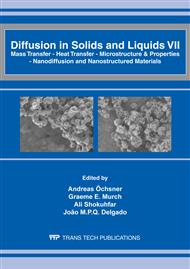p.494
p.498
p.504
p.509
p.515
p.520
p.525
p.530
p.536
Modeling Analyze from Titanium Alloy
Abstract:
Titanium and its alloys have been used a lot for its special and unique properties, and characteristics under different conditions [. When we want to use one of its alloys in aerospace industry, we have to assure that in these conditions the material will resist and keep its integrity [1,. We wanted to analyse a titanium based superalloy by modeling a routine and extracting information from it about the dependence between Gibbs free energy and the amount of weight from two components, titanium and aluminium, which is the second major element according to X-ray diffraction analysis. It was concluded that increasing Ti amount, or making the alloy richer on titanium, the system leads to a higher level of energy. The opposite behaviour happens with aluminium; increasing it, the energy of the system decreases which is great, once the equilibrium is obtained with lower levels of energy. Although the analysis had been done with a general database available in the software, its possible to predict how the material will be influenced under several situations in a quick and reliable method.
Info:
Periodical:
Pages:
515-519
Citation:
Online since:
April 2012
Keywords:
Price:
Сopyright:
© 2012 Trans Tech Publications Ltd. All Rights Reserved
Share:
Citation:


